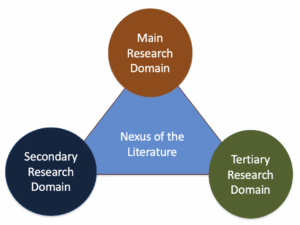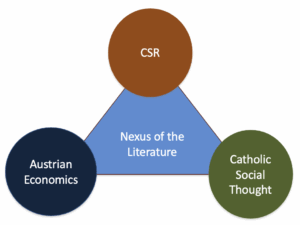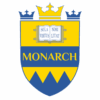From The Dean

Mastering the Literature Review: A Roadmap for Doctoral Success
A Message From The Dean

For doctoral candidates, the literature review is one of the most critical — and often one of the most misunderstood — components of the dissertation journey. Far from being a simple summary of existing work, a well-constructed literature review acts as a scholarly conversation that frames the research question, identifies gaps in existing knowledge, and establishes the foundation upon which the dissertation is built. At Monarch Business School Switzerland, we view the literature review not just as an academic exercise, but as a strategic, foundational endeavor that sets the stage for a meaningful scholarly contribution. In this article, we explore both the general best practices for writing a literature review and the distinctive methods used at Monarch to help doctoral candidates excel.
A Message From The Dean

For doctoral candidates, the literature review is one of the most critical — and often one of the most misunderstood — components of the dissertation journey. Far from being a simple summary of existing work, a well-constructed literature review acts as a scholarly conversation that frames the research question, identifies gaps in existing knowledge, and establishes the foundation upon which the dissertation is built. At Monarch Business School Switzerland, we view the literature review not just as an academic exercise, but as a strategic, foundational endeavor that sets the stage for a meaningful scholarly contribution. In this article, we explore both the general best practices for writing a literature review and the distinctive methods used at Monarch to help doctoral candidates excel.
What is the Purpose of a Literature Review?
At the doctoral level, the literature review is far more than a summary of prior research — it is a strategic academic endeavor. The purpose is not only to demonstrate familiarity with the field, but to critically engage with the scholarly conversation, trace the development of ideas over time, and identify what has been explored, what remains unresolved, and where opportunities for contribution exist. A well-constructed literature review does four essential things:
- It establishes the academic context of the dissertation.
- It demonstrates the candidate’s command of relevant theory and research.
- It highlights contradictions, gaps, and debates within the field.
- And crucially, it builds the rationale for the research question and conceptual model that will follow.
At Monarch, we view the literature review as the intellectual foundation stone of the dissertation — the part of the journey where the doctoral student begins to emerge as a scholar in their own right.
Organizing Your Literature Review: Chronological vs. Thematic vs. Hybrid
Once a doctoral candidate has engaged with the core literature and begun to understand the contours of the scholarly landscape, the next critical step is to determine how best to organize the material. The structure chosen for the literature review does more than shape the narrative — it reflects the depth of the candidate’s understanding and their ability to guide the reader logically toward the research gap. An effective structure helps the reader:
- Follow the progression of ideas across time or topics,
- Grasp the major schools of thought and theoretical camps,
- Understand how the field has matured or diverged,
- And most importantly, see where the conversation remains open.
At Monarch, we emphasize that there is no single correct structure. Instead, the organization must be deliberately chosen to best represent the field’s development and the argument the candidate wishes to make. There are three primary organizational strategies commonly used:
Approach
Description
When To Use
Chronological
Literature is organized according to the historical sequence of publication or discovery. This allows the reader to see how thinking evolved over time, how theories were built, challenged, or replaced, and how key turning points shaped the field.
Best used when the development of ideas over time is central to understanding the research problem. Especially useful for students new to a domain as it provides a clear, linear foundation.
Thematic
Literature is grouped around major themes, topics, or debates, regardless of when the studies were published. This allows the candidate to highlight clusters of thinking, differences between schools of thought, or contrasting theoretical approaches.
Best used when multiple theories or perspectives exist simultaneously, or when the field is not neatly linear. It reflects a higher level of synthesis and critical engagement.
Hybrid
Combines elements of both chronological and thematic structures. Often, a review may begin chronologically to establish historical roots and then transition into thematic discussion around modern developments.
Best used by more advanced candidates who can manage the complexity and ensure a seamless narrative without confusion.
Evolution of Organization During the Doctoral Journey
Early in the doctoral process, many candidates find that chronological organization is the most accessible. It helps them grasp the timeline of ideas, understand major theoretical milestones, and orient themselves within the field. As students gain mastery and begin to perceive deeper patterns, a thematic structure often emerges naturally. Themes, debates, and schools of thought become more visible, allowing for more sophisticated synthesis and argumentation. This transition reflects the student’s intellectual growth — from cataloguing studies to engaging critically with the evolution of thought.
Synthesis is the Core Task — Regardless of Structure
At its core, synthesis is the act of weaving together ideas from multiple sources to form a coherent and original understanding of the literature. It goes beyond listing or summarizing individual studies by drawing connections, contrasts, and patterns across them. Through synthesis, the doctoral candidate creates an integrated narrative that reveals the shape of scholarly discourse and sets the stage for identifying a meaningful research gap. Regardless of the chosen structure, the doctoral student’s central task is synthesis:
- Literature must not merely be described; it must be woven into a coherent narrative.
- The student must understand and explain the academic discourse that has unfolded across different periods.
In most fields, scholarly discussion tends to coalesce around central themes during particular periods. Once a topic has been thoroughly explored, the academic community often shifts focus to a new theme or unresolved issue. To better understand the movement within the scholarship, Monarch encourages students to apply the W5+ system:
- Who are the key scholars or schools of thought at each stage?
- What were the dominant theories, models, or debates during different periods?
- Where did major shifts originate?
- When did key turning points occur?
- Why did the discourse evolve?
- How did changes in methodology or theory drive scholarly movement?
By applying the W5+ framework, students can identify trends, shifts, contradictions, and detect instances of circularity where questions remain unresolved. Recognizing such enduring questions strengthens a dissertation’s scholarly relevance.
Building the Foundation: Mapping the Landscape of Scholarship
At Monarch, we introduce the concept of the Landscape of Scholarship. Rather than treating the literature as a static body of knowledge, students are encouraged to map how thinking, theories, and methods have evolved over time. This approach allows students to visualize where their research fits and to discover opportunities for meaningful contributions.
The Triangulation of Research Domains: A Monarch Distinction
Another distinctive element of the Monarch approach is the method of Triangulation of Research Domains, which is designed to ensure that doctoral candidates adopt a broader, more integrated perspective in their scholarly inquiry. In this framework, one domain is identified as the dominant scholarly field — the primary location of the research question — while two additional domains are selected for their theoretical or contextual support. Together, these three domains form a triangulated foundation that allows for deeper analysis, interdisciplinary richness, and greater originality.

An example of this approach can be found in my own doctoral research on Corporate Social Responsibility. The research explored Corporate Social Responsibility (CSR) as the dominant domain. To enrich the analysis and strengthen the conceptual framework, two supporting disciplines: Austrian Economics (AE) and Catholic Social Thought (CST) were added to the analysis. These two traditions, though distinct, shared a common emphasis on the individual as the core unit of ethical reflection and decision-making. Drawing from this shared foundation, a new conceptual model of CSR grounded in the principle of individual volition was developed — asserting that ethical behavior originates not from collectives or systems, but from personal responsibility and choice.

This example demonstrates how the triangulation method not only broadens the theoretical landscape but also anchors the research in established philosophical traditions that support the candidate’s thesis. It is critical that the underlying thesis of the dissertation can point to known theories to provide the academic scaffolding required to justify the reasoning behind the development of the model. It also illustrates the integrated pathway Monarch encourages its scholars to follow: from literature review, to gap identification, to the development of a conceptual model, and finally to fieldwork testing and refinement. The triangulation process is, in essence, the intellectual architecture that supports this progression — allowing candidates to construct a dissertation that is as interdisciplinary as it is rigorous.
Why Interdisciplinary Research Matters
At Monarch, the practice of triangulating research domains is more than a methodological tool — it is a deliberate pedagogical strategy designed to combat scholarly myopia and cultivate intellectual breadth. Too often in doctoral research, especially within business studies, students gravitate toward narrow areas of inquiry that feel familiar or safe. While specialization has its place, an overly confined focus can lead to blind spots: the exclusion of critical stakeholder perspectives, the oversight of broader social implications, and a failure to recognize the complex systems in which business activity is embedded.
Doctoral studies, by their very nature, should represent a period of intellectual expansion. It is a time when students are called not only to deepen their expertise, but also to step beyond their disciplinary boundaries — to explore adjacent domains, engage with unfamiliar theories, and consider alternative worldviews. This process can be uncomfortable at times, but it is precisely in this discomfort of exploration that true scholarly growth occurs.
Moreover, Monarch encourages its candidates to see themselves not simply as contributors within a siloed field, but as emerging thought leaders with a responsibility to build bridges across disciplines. Their broader mission, as my professor, Dr. Albert Eger from McGill University used to say is to “connect the meta-dots” — to discover meaningful relationships between ideas that may, until now, have remained unexamined, underdeveloped or lack interconnectivity. In doing so, they position themselves to produce research that is not only academically rigorous, but also socially relevant, holistically informed, and transformative in its potential impact.
Common Pitfalls in Literature Reviews
No discussion of literature research would be complete without acknowledging the common pitfalls that many doctoral students encounter during the review process. These missteps, while understandable — especially for those engaging in scholarly writing at this level for the first time — can significantly undermine the integrity and impact of the dissertation if left uncorrected.
Perhaps the most frequent error is the tendency to summarize rather than synthesize. Students often assemble a collection of article descriptions, treating each study as a standalone entry without drawing meaningful connections between them. This leads to a fragmented and often superficial narrative, rather than the cohesive scholarly dialogue that a literature review is meant to embody.
Closely related is the problem of poor structural organization. Whether a student opts for a chronological, thematic, or hybrid model, the structure must guide the reader logically toward the research gap. Disjointed or inconsistent organization leaves readers confused and weakens the argument the student is trying to build.
Another common shortfall is the failure to identify and engage with foundational works. In an effort to remain current, students may focus too heavily on the most recent studies while neglecting the classic theories or landmark publications that shaped the field. A sound review acknowledges both the historical lineage and the contemporary state of the literature.
Many reviews also suffer from disciplinary isolation — a narrow lens that overlooks adjacent fields and alternative viewpoints. This is particularly problematic in business studies, where economic, sociological, psychological, and ethical considerations frequently overlap. Ignoring these perspectives results in a constrained understanding and diminishes the potential for original contribution.
Finally, some students fall into the trap of uncritical acceptance. The literature review is not a place for passive agreement with prior research. Rather, it is a space for thoughtful engagement — to question assumptions, identify methodological weaknesses, and highlight points of contention. A strong review demonstrates not only what has been said, but what has been left unsaid, misinterpreted, or insufficiently addressed.
At Monarch, we stress the importance of approaching the literature review with a critical and strategic mindset. It is not an academic exercise to be completed for its own sake; it is a deliberate scholarly act that builds the foundation for everything that follows in the dissertation. Avoiding these common pitfalls is essential to producing a review that is clear, compelling, and truly doctoral in its quality.
Practical Tips for Writing an Effective Literature Review
Writing a strong literature review requires far more than collecting and listing articles. It is a deliberate act of academic authorship, where the student steps into the role of both analyst and narrator — constructing a compelling, coherent account of how scholarship has unfolded and where their research fits within it. While the specific content of each review will vary according to discipline and topic, certain practices are universally applicable.
The first and most important step is to begin with a clear plan and organizational structure. Whether the student is using a chronological, thematic, or hybrid approach, it is essential to outline the review in advance and understand the function of each section. A well-structured review should build momentum and lead the reader step-by-step toward the research gap — not meander aimlessly through unrelated sources.
Students should aim to write analytical summaries, not descriptive ones. This means distilling not just what a particular source says, but how it contributes to — or contradicts — the larger conversation. It involves identifying patterns, inconsistencies, and theoretical implications, and weaving these into an argument that supports the research question.
Good literature reviews rely on topic sentences and signposting to guide the reader. Every paragraph should have a clear purpose, typically indicated in the first sentence. Transitional phrases and logical connections between paragraphs are equally important in maintaining flow and coherence.
A key practice is to synthesize across studies, rather than treating each source in isolation. The most effective reviews create a dialogue between scholars, placing different viewpoints into conversation with one another and showing where agreement or divergence exists. This kind of synthesis demonstrates critical thinking and positions the candidate as a developing expert.
Students should also remember that the literature review is a dynamic document, not a static summary. As new publications are released and as the candidate’s own conceptual model evolves, the review should be periodically updated to reflect this growth. A literature review completed early in the dissertation process will almost always require refinement before final submission.
Finally, tone matters. The literature review must be written in an academic, authoritative voice, free from overly casual language or unsubstantiated opinions. Yet it should also remain readable and persuasive — a well-crafted argument, not a data dump.
At Monarch, we encourage our students to approach the literature review as an opportunity to demonstrate scholarly leadership. It is their chance to show that they understand the field, can speak its language, and are prepared to make a meaningful contribution to its development. When written with precision, insight, and discipline, the literature review becomes a source of strength — a scholarly asset that supports every chapter that follows.
Core Reflection
Ask yourself, How does your literature review reveal not only what is known but also what is still unknown? and How well can you identify returning debates and shifts over time?
Conclusion: A Strategic Launchpad for Doctoral Success
The literature review is far more than a required chapter in a doctoral dissertation — it is the strategic launchpad for the entire research journey. It is where the candidate defines their scholarly identity, demonstrates their ability to engage critically with the academic community, and lays the foundation for the original contribution they will make to their field.
At Monarch, we emphasize that the literature review is not a box to be ticked, but a rigorous intellectual endeavor. Through it, the candidate learns to navigate the complexity of competing theories, to trace the historical and thematic evolution of thought, and to construct a coherent narrative that reveals not only what is known, but — more importantly — what remains unknown. This process of gap identification is not incidental. It is the very heart of doctoral inquiry.
Equally, we encourage our students to approach their review as an interdisciplinary exploration. The triangulation of domains, the search for deeper theoretical roots, and the willingness to step beyond disciplinary boundaries are hallmarks of the Monarch approach. In doing so, students develop the capacity to see connections where others have not — and it is in these connections that the seeds of innovation often lie.
A well-written literature review does not merely support a dissertation — it shapes it, justifies it, and empowers it. It ensures that the research is not only grounded in established knowledge, but aimed at expanding it. It transforms the doctoral student from a consumer of knowledge into a contributor to the scholarly community.
Doctoral research is, above all, a journey of becoming — becoming a scholar, a thinker, a bridge-builder of ideas. The literature review marks the true beginning of that journey. When approached with care, discipline, and strategic purpose, it becomes one of the most rewarding phases of doctoral work — and a defining feature of long-term academic success.
Academically yours,
Professor Dr. Jeffrey Henderson
Dean, Monarch Business School Switzerland


